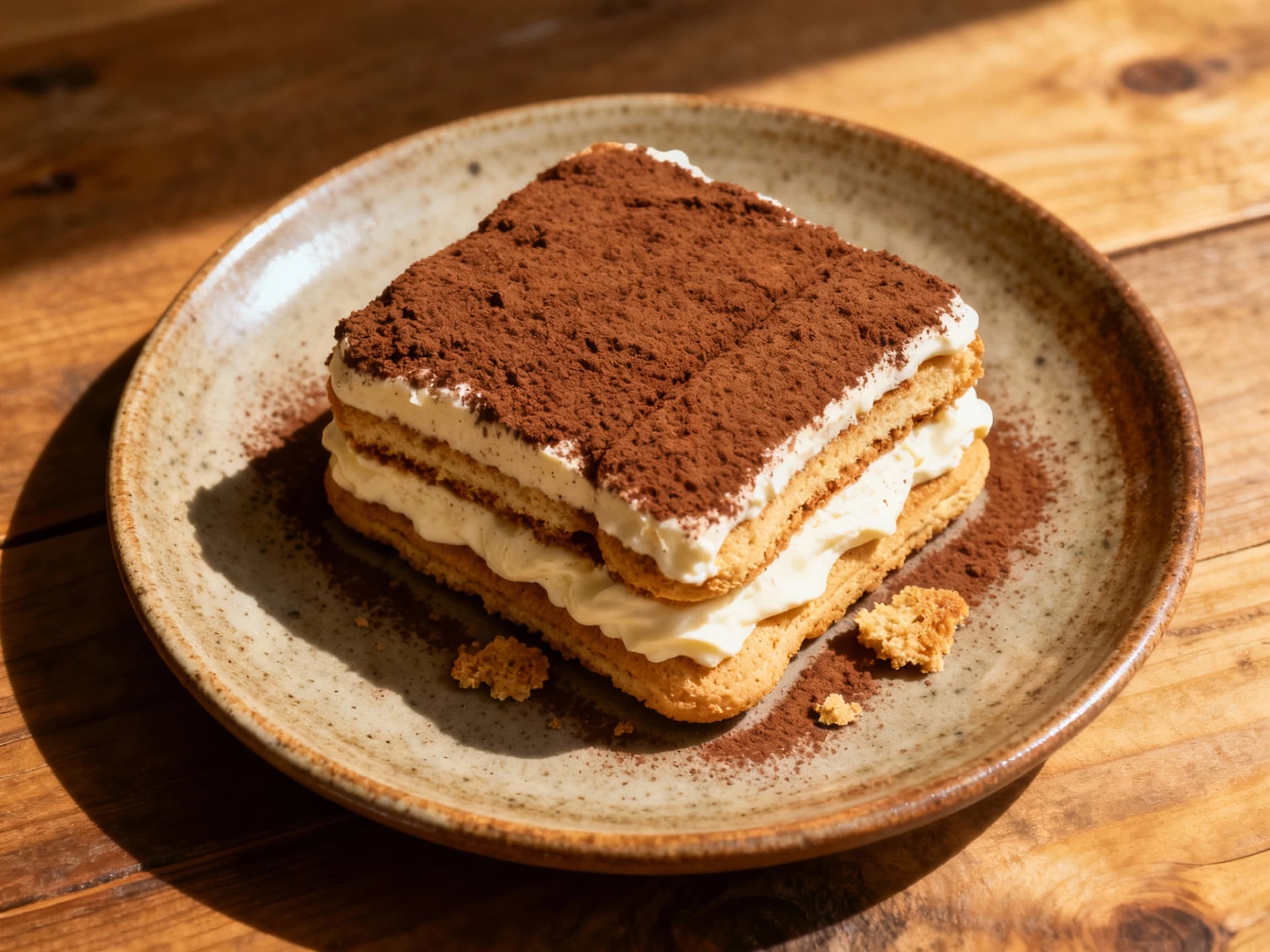
Tiramisu
Tiramisù
- Country
- Italy
- Region
- Veneto
- Recipes
- 3 Recipes
Dish information
Tiramisù, meaning 'pick me up' or 'cheer me up' in Italian, is a celebrated dessert renowned for its harmonious blend of coffee, mascarpone, and cocoa. Its precise origins are a subject of playful debate, but it is most commonly attributed to the Veneto region, particularly the town of Treviso, in the latter half of the 20th century. While some claim it was invented in the 1960s at the restaurant 'Le Beccherie' by confectioner Roberto Linguanotto, others point to earlier precursors or a more general evolution of dessert-making traditions in the area. The dish’s rise to international fame was rapid, transforming from a regional specialty into one of the world's most beloved desserts. The classic Tiramisù consists of savoiardi (ladyfingers) soaked in strong espresso coffee, layered with a rich, airy mixture of raw eggs, sugar, and mascarpone cheese, and then dusted generously with unsweetened cocoa powder. A touch of Marsala wine or rum is sometimes added to the zabaglione-like cream or coffee soak for an extra layer of complexity. The beauty of Tiramisù lies in its delicate balance of flavors and textures: the slight bitterness of the coffee and cocoa, the sweetness of the cream, and the melt-in-your-mouth softness of the ladyfingers. It represents a modern yet timeless classic in Italian confectionary.
Timeline
The dessert 'Tiramisù' is believed to have been invented or popularized at 'Le Beccherie' in Treviso, Veneto.
Tiramisù starts appearing on restaurant menus in Italy, gaining local recognition.
The dessert gains wider recognition across Italy and begins to be exported internationally.
Tiramisù becomes a global phenomenon, one of the most popular Italian desserts worldwide.
The origin of Tiramisù is debated, with research suggesting possible earlier roots or versions in Friuli-Venezia Giulia.


